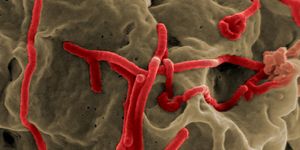What is Leigh Syndrome?
While neurological conditions such as Alzheimer's disease, ALS, Parkinson's and glioblastomas are frequently studied, other disorders are not as well researched. Leigh syndrome is one of these conditions.
It is a rare genetic neurometabolic disorder. In the United States, the incidence of Leigh syndrome is about one in 40,000 live births. It's genetic and is caused by mutations in genes involved with cell metabolism. In some cases, there is a mutation on the mitochondria of one's DNA and can be passed down to children as either a recessive or dominant gene.
It usually presents in the first year of life but can show up later. The symptoms all relate to the central nervous system and include a loss of acquired motor skills, a lack of muscle tone, and irritability, and general weakness. Since the mutations that can cause it often occur in the energy sources of cells, the mitochondria, the disease impacts cell respiration and can result in kidney disease, lactic acidosis, and other metabolic conditions.
Since it is so rare, information and research are hard to come by. It also shares symptoms with many other developmental delays in children, most of which are far common. Very often parents will find it difficult to get an accurate diagnosis. On an MRI scan, Leigh syndrome shows up as dark spots on brain tissue, which look like evidence of a stroke or brain bleed, which further complicates getting the diagnosis correct.
Once the disease has begun to progress, it can take over. Kidney function is impaired, respiratory problems develop and because most patients are very young at onset, they cannot communicate symptoms well. It can affect vision as well, including crossed eyes and rapid deterioration of eye muscles and the optic nerve. Finally, heart problems are common in children with Leigh syndrome, including an enlarged heart, problems with the pericardial sac and fibrous overgrowth in the valves of the heart. Leigh syndrome is fatal, with most deaths occurring in childhood. Rarely patients will survive until adolescence or early adulthood.
While it's rare in the United States, there are two specific populations where the disease is much more common. For example, the condition occurs in approximately 1 in 2,000 newborns in the Saguenay Lac-Saint-Jean region of Quebec, Canada. In the Faroe Islands off Norway, the incidence is about 1 in 1700 births. The higher prevalence in these populations is likely due to a lack of genetic diversity.
In the video below, see how one family is dealing with the diagnosis of Leigh syndrome. They live near Dallas and will be part of a new research study on gene therapy for Leigh's. Check out their story and what further treatment options might be available in the future.
Sources: National Organization for Rare Disorders Genetics Home Reference, US National Library of Medicine









